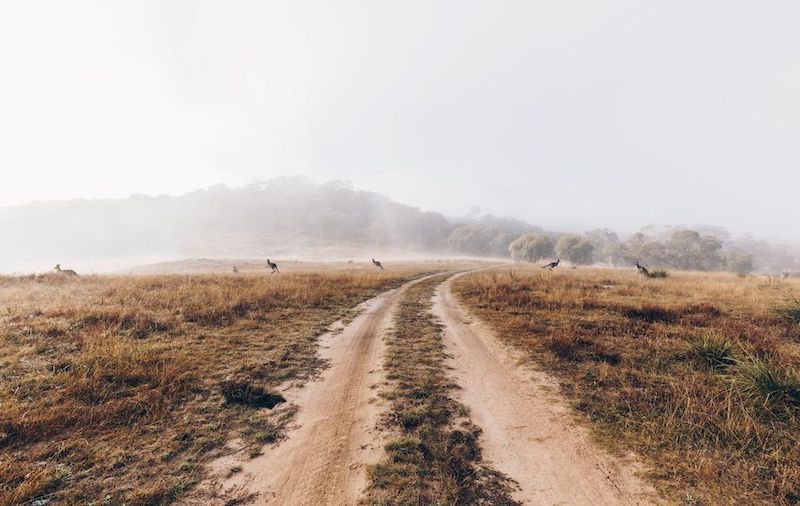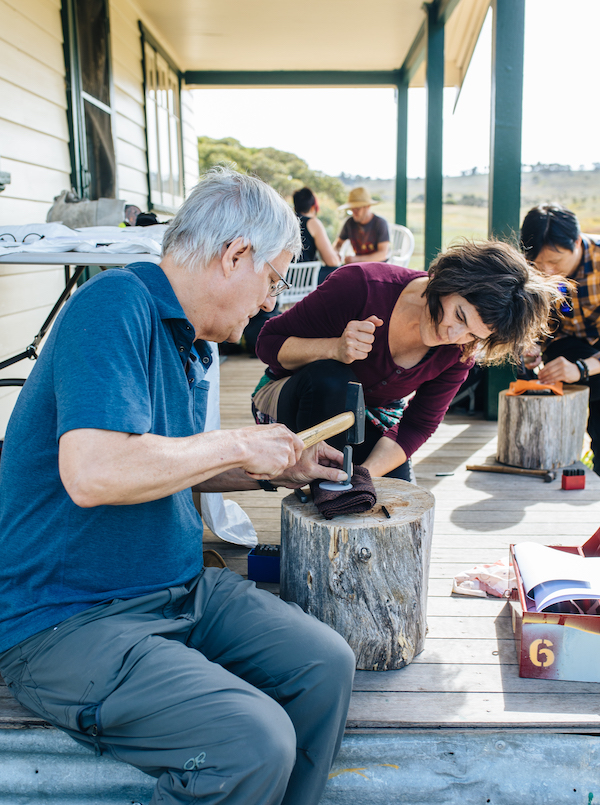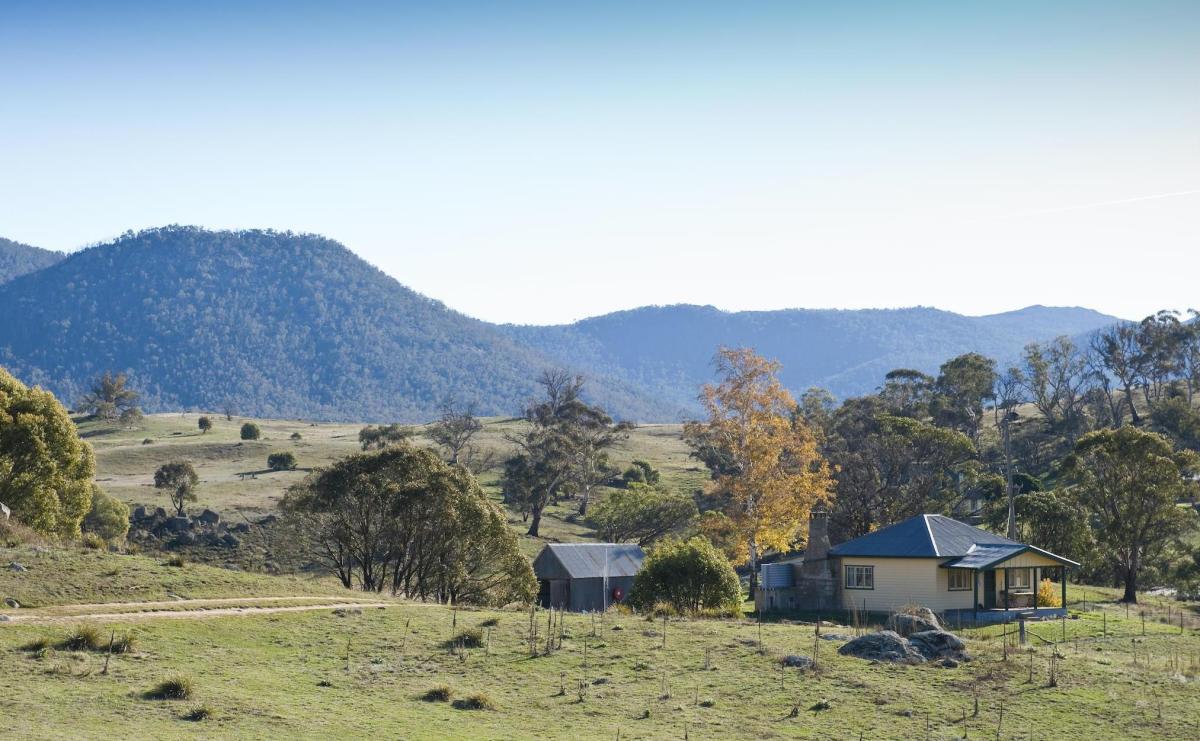It is not often that an artist or designer has the opportunity to make work deep within a National Park, disconnected from the pressures of our contemporary world for three solid weeks.
Craft ACT is again partnering with ACT Parks & Conservation Service to offer a unique residency at the 1920’s Gudgenby Ready-Cut Cottage, situated in the Gudgenby Valley, within Namadgi National Park, and nestled in the Brindabella Mountains outside Canberra.
In short, it is an inspiring landscape. The cottage also has a rich history as an Indigenous site and is unique also for its history as an early ‘ready-cut’ or prefabricated kit home.
‘It is such an exquisite gift to an artist’, said Rachael Coghlan, CEO and Artistic Director of Craft ACT: Craft + Design Centre.
‘As Craft ACT turns fifty this year, we are very mindful as custodians of this station we’ve been given by the Rangers of Namadgi National Park, and the great legacy that relationship has had for artists’, she told ArtsHub.
THE GIFT OF TIME
While COVID may have prescribed isolation upon many, for most it has also bought an intensity that has been hard to retreat from.
Coghlan said that residencies are important in offering that ‘space, stillness and solitude for an artist to really reflect on their practice in a way that is hard when most artists are juggling their creative practice, with making a living and life demands’.
Three weeks can feel a life time, and the career wins can be as fruitful as further study through mentorship and new connections.

Namadgi National Park, the site for Craft ACT residency. Photo credit: 5 Foot Photography.
Program Director Kate Nixon said: ‘From an artist’s perspective, this residency really hits a sweet spot. Long residencies can be a bit exclusive as some artists can’t take 4-months if they have a family and/or job – time is really unobtainable – and then there are those where the artist has to deliver an exhibition at the end of the residency, so there are no happy accidents under that time pressure.’
She added that as this residency is spread out over a year, with intense moments of research and making, is allows ideas to ‘percolate over a longer time’.
Coghlan said that the most recent artists joining the residency alumni – Jenni Kemarre Martiniello and Sharon Peoples (2020) – described it as transformative.
‘They talk about going in with idea, and then gave themselves over to the valley, and the valley told them what to do – it was a very different outcome. They said they will be synthesising and processing what arose from the residency for a decade, and that is really profound.’
She also cited 2014 Resident Sally Blake, who took away from her time the idea of using natural dyes from plants. ‘It has shaped her practice for nearly a decade now – and that is what Craft ACT is all about.’
‘What also makes this particular residency really successful – and that encounter so enduring – is that it’s just not a stay away, but the artist walks away with something tangible – an exhibition, public programs and someone writes about their work – it is a complete package’, Coghlan added.

Artist in Residence open day, Photo credit: 5 Foot Photography
WHY THIS RESIDENCY IS SO TIMELY
While concerns for our environment tap into a zeitgeist for making now, this residency has long encouraged conversations about form, material use, and nuance drawn from the landscape.
Established in 2006 by former Craft ACT CEO, Barbara McConchie, the residency came out of the 2003 bushfires and an awareness that artists could bring new perspectives and find something good out of that catastrophe, said Coghlan.
‘The Namadgi National Park was devastated by the bushfires in 2020, and you are really aware of that as you drive through a still black, barren landscape where the granite boulders were literally disintegrated by the heat. But the Gudgenby Valley was amazingly protected and the cottage saved’.
Each edition of the residency Craft ACT partners with a national research institution in delivering the residency. This year it will be the National Library of Australia, with a special focus on their vast collection of maps.
‘Lots of artists respond to place and site and mapping; while the NLAs collection of maps is historically important and intriguing, it also is graphically beautiful. They are very keen to bring new perspectives – new eyes on their collection – and interpret the objects in their archives’.
Nixon added that the partnership with Park Rangers has also added another layer of meaning to the landscape as its contemporary custodians, and provide an invaluable intersection for artists during their stay.
‘The Rangers are amazing; they totally get an artist’s vision and passion, and they are really open to collaborating and creating the best experience for the artist’, said Nixon. ‘The connections that you make through these residencies are really special’.
Coghlan concluded: ‘Craft ACT is a very respected and well recognised centre for craft and design nationally, and internationally, not only for its longevity over fifty years, but in that it has continued to be responsive to changing needs, and to find new ways to bring its member’s work to diverse audiences and collections’.
This residency is yet another example of staying on the cusp of new thinking and nurturing new career pathways at Craft ACT.
THE NEED TO KNOW
Expressions of interest are open to professional, practicing craft practitioners and designer-makers who have a demonstrated history of excellence in their practice. Applications are open to Craft ACT members only, but is not exclusive to members living in the ACT.
Two to four residency placements will be awarded.
The 2022 residency program will include:
- 2-week Research period at the National Library of Australia to explore connections and directions for the residency. The collection includes around 1 million maps, from early European charts to current mapping of Australia, in print and digital form.
- 3-week Residency at Ready-Cut Cottage in Namadgi National Park.
- Open Day which will include artist talks, and workshops.
- A group exhibition in 2023 as a result of the residency, supported by a printed catalogue, commissioned essay and public programs.
- An artist fee of $2000 to be shared among participating artists.
Diary dates:
- Research period at National Gallery of Australia: Monday 7 March to Friday 18 March 2022
- Residency Period at Gudgenby Ready-Cut Cottage: Tuesday 19 April – Monday 9 May 2022
- Open Day at Gudgenby Ready-Cut Cottage: Saturday 7 May 2022
- Extra Research Period at Geoscience Australia (optional) Monday 23 May to Friday 27 May 2022
- Artist-in-residence exhibition at Craft ACT: Thursday 30 March – Saturday 20 May 2023
- *Timeline may be subject to change
- Submissions close midnight, Sunday 16 May 2021
Learn more about the residency, and apply.






